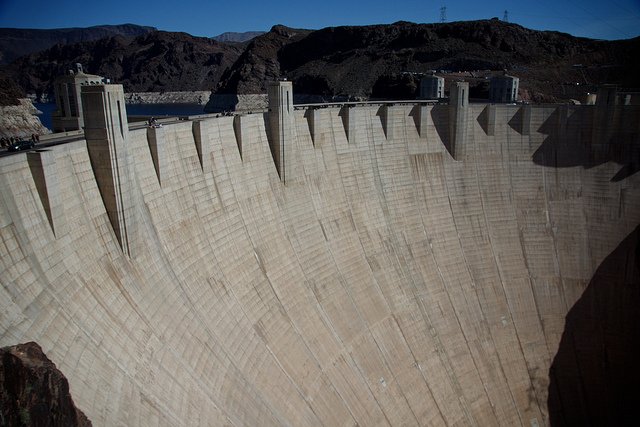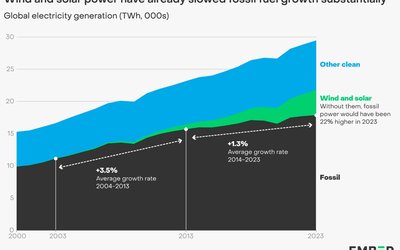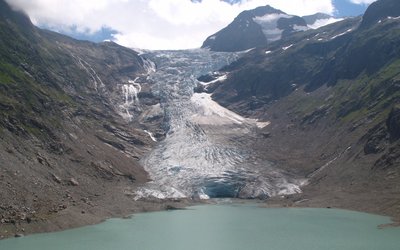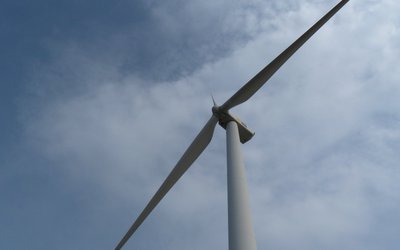Hydropower and cooling water under climate change: most of the world’s potential still not being used
September 2, 2016

Worldwide, 81% of total electricity generation is currently produced by thermoelectric power plants (nuclear, biomass- and fossil-fuelled), and 17% by hydropower plants. It is therefore of utmost importance for the electricity sector to have sufficient fresh water resources of low temperature to generate power and to cool thermoelectric power plants. How will global warming change the world’s available surface water resources, in terms of stream flow and water temperature, and how will these changes affect the potential for hydropower and thermoelectric power generation?
Definitions
This has been assessed on a global scale by calculating both gross hydropower potential and cooling water discharge capacity. Gross hydropower potential is defined as “the annual energy potentially available when all natural runoff in a country is harnessed down to sea level (or to the border line of the country) without any energy losses”. In other words, “the capacity of hydropower generation possible if all natural water flows contained as many 100% efficient turbines as possible”. Cooling water discharge capacity is defined as the potential of surface water systems to dilute a certain amount of waste heat without exceeding environmental legislations (i.e. maximum permitted water temperatures and water temperature increases). Thus, gross hydropower potential and cooling water discharge capacity are upper limits that indicate the potential of future growth of thermoelectric and hydropower electricity generation. Actually, only a few percent of these upper limits is being used today!
Gross hydropower potential and cooling water discharge capacity have been calculated for both a low- and high-end scenario of climate change (the so-called RCP2.6 and RCP8.5 scenarios), by using a combination of different models for climate change and river discharge.
Increase hydropower potential
Currently, both gross hydropower potential and mean cooling water discharge capacity are highest in Asia, followed by South America, Africa, North America, Europe, and Australia & Oceania. The assessment shows that global gross hydropower potential may increase between +2.4% and +6.3% for the 2080s compared to 1971 - 2000. Regions with considerable (>20%) increases in gross hydropower potential are mainly central Africa, India, central Asia and the northern high-latitude region. Regions with considerable (>20%) declines in hydropower potential are southern Europe, northern Africa, southern United States and parts of South America, southern Africa and southern Australia.
Decrease cooling water capacity
Global mean cooling water discharge capacity is projected to decrease by 4.5 - 15% (2080s). The largest reductions are found for the United States, Europe, eastern Asia, and southern parts of South America, Africa and Australia, where strong water temperature increases are projected combined with reductions in mean annual stream flow. Cooling water discharge capacity is expected to increase considerably (>20%) in India, central Africa, some northern parts of Australia and for the most northern high-latitude regions.
Misleading numbers?
So on a global scale gross hydropower potential will increase by 2.4% - 6.3%, and mean cooling water discharge capacity will decrease by 4.5% - 15%, between now and the end of this century. These numbers may be misleading when looking at the possibilities to expand actual hydropower and thermoelectric power. Both hydropower and thermoelectric power may increase up to a few hundred percent in the course of this century. These large percentages are completely different from the small relative changes of the upper limits due to the fact that currently only 5% and 0.3% of these upper limits of gross hydropower potential and mean cooling water discharge capacity are actually being used for hydropower and thermoelectric power, respectively! Thus, there seems to be a lot of potential to further increase hydropower and thermoelectric power. This is especially interesting since most current hydropower plants are situated in regions with expected declines in mean annual stream flow, whereas a large part of the world’s land surface will experience increases in stream flow and thus in gross hydropower potential.
Source: Van Vliet et al., 2016. Global Environmental Change 40: 156-170.
Photo: Paul Hudson (www.flickr.com)








